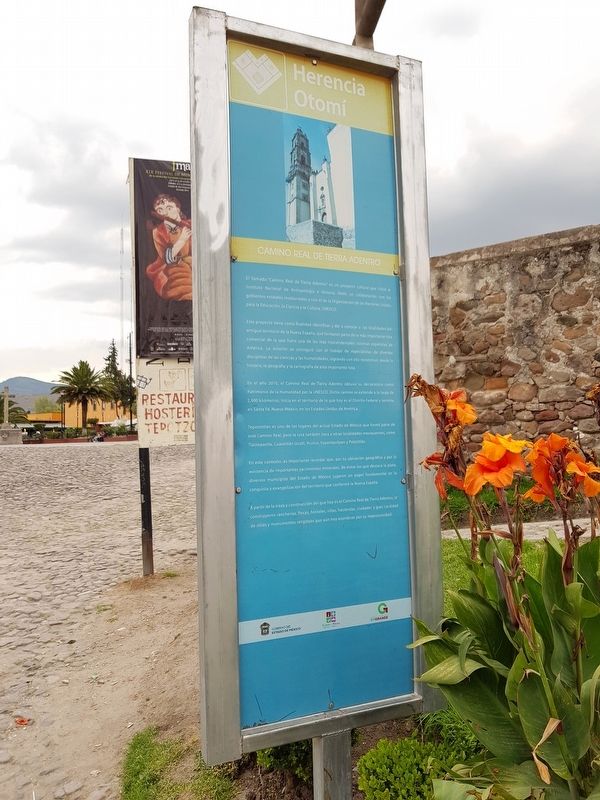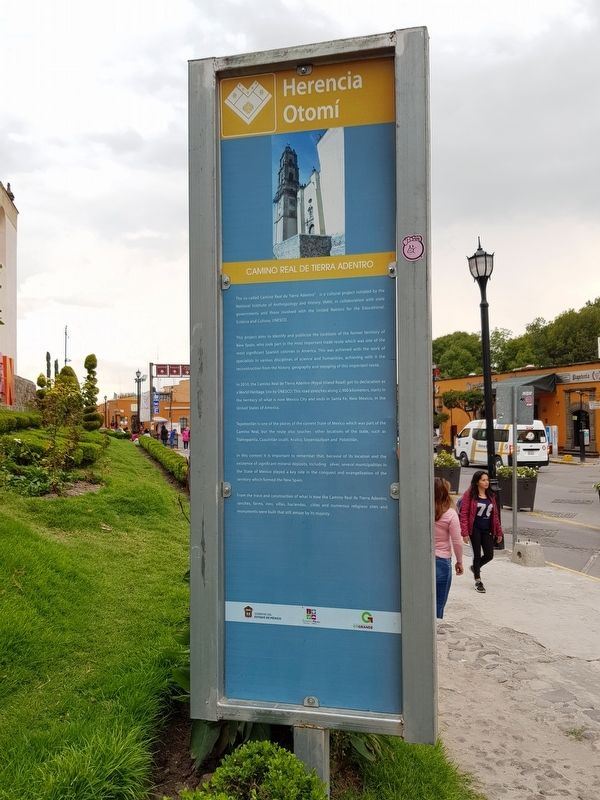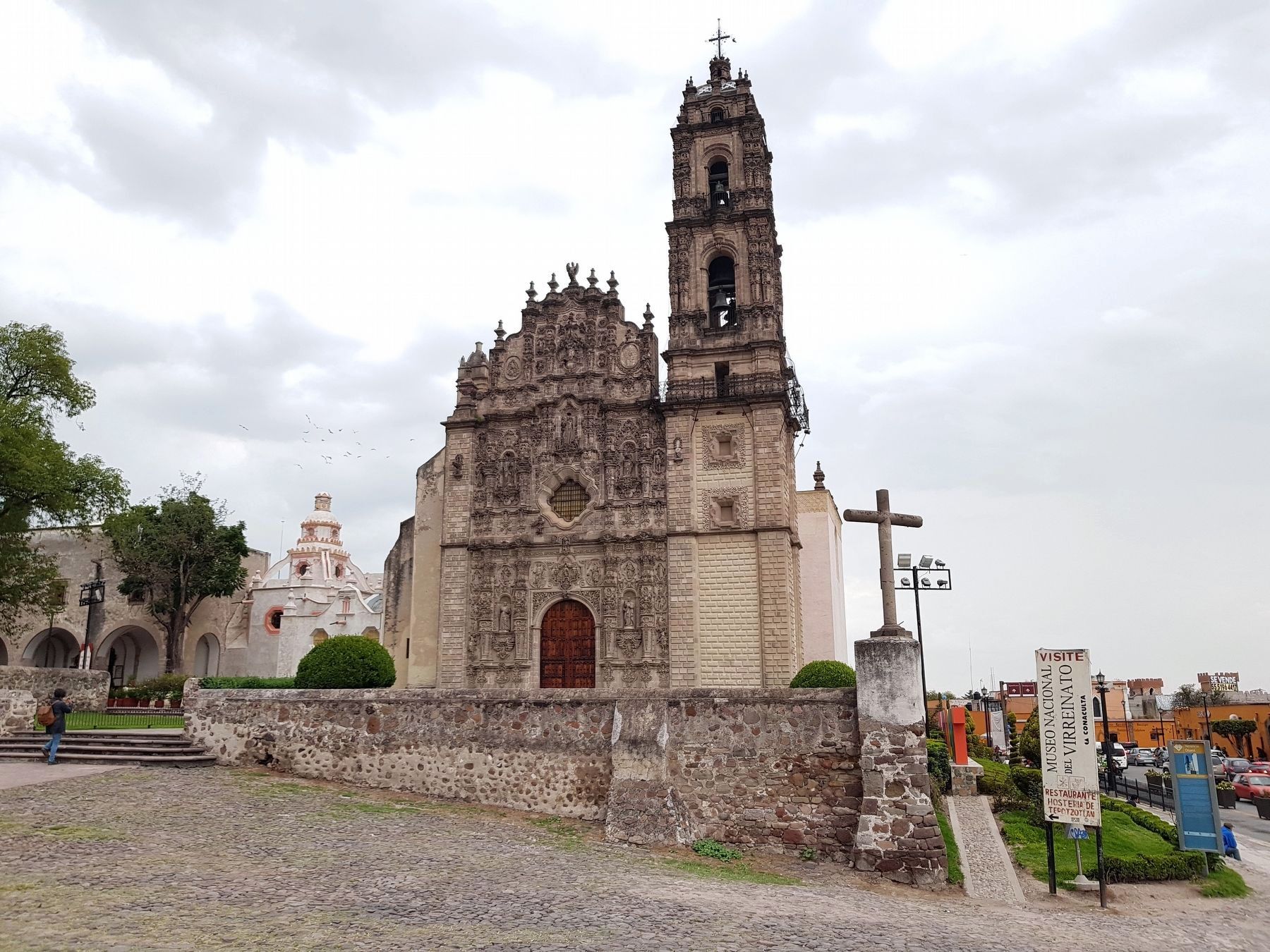Tepotzotlán, Mexico State, Mexico — The Central Highlands (North America)
The Royal Inland Road at Tepotzotlán
Camino Real de Tierra Adentro
El llamado “Camino Real de Tierra Adentro” es un proyecto cultural que inició el Instituto Nacional de Antropología e Historia, INAH, en colaboración con los gobiernos estatales involucrados y con el de la Organización de las Naciones Unidas para la Educación, la Ciencia y la Cultura, UNESCO.
Este proyecto tiene como finalidad identicar y dar a conocer a las localidades del antiguo territorio de la Nueva España, que formaron parte de la más importante ruta comercial de la que fuera una de las más trascendentales colonías españolas de América. Lo anterior se consiguió con el trabajo de especialistas de diversas disciplinas de las ciencias y las humanidades, logrando con ello reconstruir desde la historia, la geografía y la cartografía de esta importante ruta.
En el año 2010, el Camino Real de Tierra Adentro obtuvo su declaratoria como Patrimonio de la Humanidad por la UNESCO. Dicho camino se extiende a lo largo de 2,900 kilómetros, inicia en el territoria de lo que hoy es el Distrito Federal y termina en Santa Fé, Nuevo Mexico, en los Estados Unidos de América.
Tepotzotlán es uno de los lugares del actual Estado de México que formó parte de este Camino Real, pero la ruta también toca a otras localidades mexiquenses, como Tlalnepantla, Cuautitlán lzcalli, Aculco, Soyaniquilpan y Polotitlán.
En este contexto, es importante recordar que, por su ubicación geográfica y por la existencia de importantes yacimientos minerales, de entre las que destaca la plata, diversos municiplos del Estado de México jugaron un papel fundamental en la conquista y evangelización del territorio que conformó la Nueva España.
A partir de la traza y construcción del que hoy es el Camino Real de Tiera Adentro, se construyeron rancherías, fincas, hostales, villas, haciendas, ciudades y gran cantidad de sitios y monumentos religiosos que aún hoy asombran por su majestuosidad.
Camino Real de Tierra Adentro
The so-called Camino Real de Tierra Adentro" is a cultural project initiated by the National Institute of Anthropology and History, INAH, in collaboration with state governments and those involved with the United Nations for the Educational, Science and Culture, UNESCO.
This project aims to identify and publicize the locations of the former territory of New Spain, who took part in the most important trade route which was one of the most significant Spanish colonies in America. This was achieved
with the work of specialists in various disciplines of science and humanities, achieving with it the reconstruction from the history, geography and mapping of this important route.
In 2010, the Camino Real de Tierra Adentro (Royal Inland Road) got its declaration as a World Heritage Site by UNESCO. This road stretches along 2,900 kilometers, starts in the territory of what is now Mexico City and ends in Santa Fe, New Mexico, in the United States of America.
Tepotzotlán is one of the places of the current State of Mexico which was part of the Camino Real, but the route also touches other locations of the state, such as Tlalnepantla, Cuautitlán Izcalli, Aculco, Soyaniquilpan and Polotitlán.
In this context it is important to remember that, because of its location and the existence of significant mineral deposits, including silver, several municipalities in the State of Mexico played a key role in the conquest and evangelization of the territory which formed the New Spain.
From the trace and construction of what is now the Camino Real de Tierra Adentro, ranches, farms, inns, villas, haciendas, cities and numerous religious sites and monuments were built that still amaze by its majesty.
Erected by Gobierno del Estado de México.
Topics and series. This historical marker is listed in these topic lists: Colonial Era
• Industry & Commerce • Man-Made Features • Roads & Vehicles. In addition, it is included in the El Camino Real de Tierra Adentro series list. A significant historical year for this entry is 2010.
Location. 19° 42.77′ N, 99° 13.361′ W. Marker is in Tepotzotlán, Estado de Mexico (Mexico State). Marker is on Avenida Insurgentes just west of Avenida del Trabajo, on the right when traveling west. The marker is southwest of the Temple of San Francisco Javier. Touch for map. Marker is in this post office area: Tepotzotlán MEX 54600, Mexico. Touch for directions.
Other nearby markers. At least 8 other markers are within 14 kilometers of this marker, measured as the crow flies. 17th Century Entryway (within shouting distance of this marker); Principal Facade of the San Francisco Javier Church (within shouting distance of this marker); Atrium of the Olives (about 90 meters away, measured in a direct line); The Cloister of San Francisco Javier (about 90 meters away); Camino Real de Tierra Adentro (about 90 meters away); Old Jesuit School of San Martín (about 120 meters away); The Aqueduct of Xalpa (approx. 14 kilometers away); Sierra of Tepotzotlán (approx. 14.1 kilometers away). Touch for a list and map of all markers in Tepotzotlán.
Credits. This page was last revised on November 1, 2018. It was originally submitted on November 1, 2018, by J. Makali Bruton of Accra, Ghana. This page has been viewed 139 times since then and 9 times this year. Photos: 1, 2, 3. submitted on November 1, 2018, by J. Makali Bruton of Accra, Ghana.


